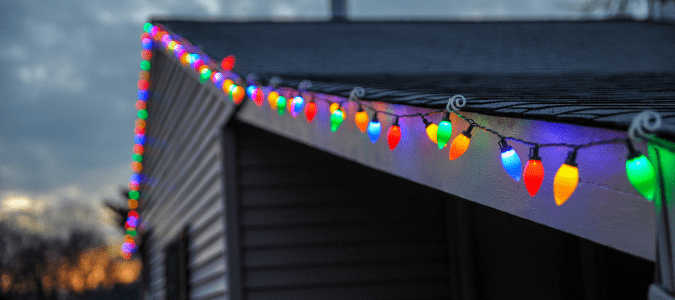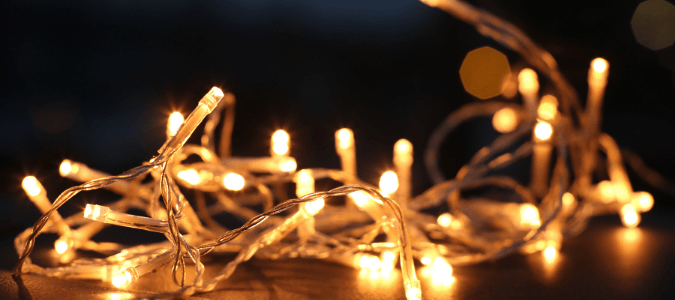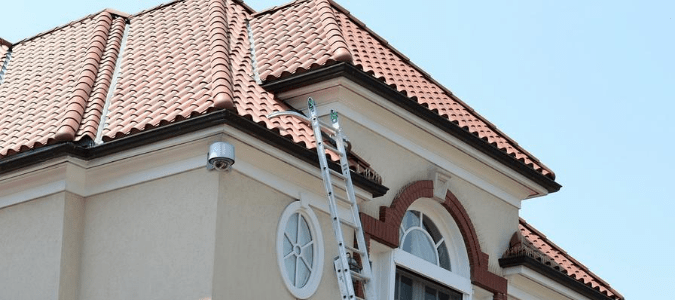
While technology has improved over the years, unfortunately, all Christmas lights need to be replaced at some point. No matter how many times you replace individual bulbs, the wiring on your strings of lights and other essential components that make the lights work will eventually wear out.
The timeline for giving your lights the boot isn’t set in stone. In general, homeowners can keep using their lights as long as they’re still working. However, if you wait too long to replace Christmas lights, they might suddenly shut off in the middle of the holiday season, or you might encounter more serious problems like electrocution and fires.
The lifespan of Christmas lighting typically depends on the kind of lights you have and how you use them. For example, traditional incandescent lights usually have a lifespan of around four to six years, while newer LED lights often last anywhere from seven to ten years. Nonetheless, a variety of factors can determine whether you need to replace your lights sooner or can keep using them for several more years.
For one, different manufacturers produce lights that are rated to different lifespans, so one strand of LED lights might last much longer than another one. Additionally, how often you use your lights will impact how long they last. Even the highest-rated lights will wear out sooner if you leave them up year-round or keep them turned on all the time.
Furthermore, if you use a strand of Christmas lights on the outside of your home where they’re exposed to ice, wind or other harsh weather conditions, then they might deteriorate sooner than expected. Other rough conditions can shorten the life of your lights as well. For example, homeowners who don’t store their Christmas lights properly often notice that they break or need replacing more often.
It’s important to inspect your lights before you hang them up and when you take them down at the end of the holiday season to check for wear and tear. While you can repair some deterioration like a few burned out bulbs, lights that are wearing down might not be safe for you to use. It is probably time to replace your lights if you notice that the coating over the wiring is wearing down, the plug is corroded or there is other noticeable deterioration.
It’s often difficult for homeowners to know how long Christmas lights last, but you don’t have to deal with this all on your own. Holiday lighting professionals can advise you on when to replace Christmas lights, plus they can handle every detail of your holiday lighting. From designing your lighting scheme to hanging your Christmas lights to taking everything down after the holidays are over, a pro can do everything for you, so you don’t have to hassle with this yourself during the busy holiday season.
If it is time for you to recycle your old Christmas lights, there are some considerations before purchasing new lights. For example, should you go with cool white or warm white lights?

Cool White Versus Warm White Christmas Lights
Some homeowners don’t realize that not all white-colored Christmas lights are the same. Others have a strong preference for one kind of lights, but they’re not sure how to tell the difference when they’re buying them. White Christmas lighting can look very different when up on your property depending on whether they are cool white lights or warm white lights.
Cool white lights are often associated with the first kinds of LEDs that were available for homeowners to buy. These lights have a brighter, more vibrant kind of light that seems to have a slight blue tint. On the other hand, warm white lights seem to have a softer glow and can appear yellowish. These types of lights are often associated with incandescent bulbs, such as the kinds of Christmas lights that have been on the market for several years.
Both types of white lights are helpful for creating ambiance and helping you set the scene for your holiday celebration. Warm white lights usually go best with gold and classic Christmas colors like red and green, plus they’re great for creating a rustic, natural or traditional look. Meanwhile, cool white lights have a more contemporary look that pairs well with icicles, snow and more modern decorations. These lights tend to work well with blues, silver and white, and they can help turn your home or outdoor space into a winter wonderland.
A primary reason that lights appear to be cool or warm is the brightness scale. Warm white lights shine at about 2,700 to 3,500K (the K stands for kelvins, a unit used to measure color temperature), while cool white lights are usually rated at around 3,500 to ranges over 4,000K. The science behind these lights is why it’s important to purchase several strands of white lights from the same manufacturer.
While lights might seem to be the same when they’re in a box at the store, they can look vastly different when you plug them in. Different manufacturers use different ratings of lights, which can leave you with an unexpected variety in your lighting scheme. For example, if you buy several strands of warm white lights from multiple different manufacturers, one manufacturer’s string that’s rated at 2,700K will look dull compared another string that’s rated at 3,500K.
LED lights used to only be available in cool white, but stores now have them in a variety of hues. This gives homeowners the option to choose lights based on other key factors besides the color and brightness of lights, such as energy efficiency and safety. While LEDs often have a higher upfront cost than incandescent bulbs, LED Christmas lights don’t use as much electricity and can help save homeowners money in the long-run. Additionally, incandescent bulbs can become hot to the touch, so LEDs can be a safer option if your lights are within reach of a curious child or pet.
Choosing the Christmas lights that are best for your home can be time-consuming and stressful. Without spending a lot of time and money on trial and error, it’s difficult for homeowners to know whether certain lights look good in their space until they hang them and plug them in. This can lead to multiple trips to the store and added frustration at a time when you already have a long list of other things to do to prepare for your Christmas celebration.
However, if you hire a pro, that person can take care of your holiday lighting for you, so you can focus on enjoying time with your family and friends. Holiday lighting professionals can help you decide whether warm white or cool white Christmas lights would look better in your home or yard, plus they can handle all the complicated details related to your setting up your holiday lighting.
If you decide to try hanging lights yourself, it can be a bit more complicated if you have don’t have gutters.

How To Hang Christmas Lights on a Roof Without Gutters
When you don’t have gutters, it can seem confusing to figure out how to hang your Christmas lights. Homeowners might see nails or a staple gun as the only options they have available, but both of these options can leave holes in the roof that are not only unsightly but can also lead to further damage down the line. Thankfully, homeowners without gutters have other options available to them that won’t permanently damage their roof or other areas of their home.
One option that homeowners can use to hang Christmas lights on a roof that doesn’t have gutters is to use light clips. These are typically the same type of clips that you would use on gutters, but if you flip them over, you can also use them to attach lights to shingles without damaging the roof’s surface.
There are a variety of clips available that can work on different types of shingles and roofing. For example, if you have a metal roof, there are clips that have magnets on one side that fasten directly to the roof. You can also use these types of clips to attach lights to metal siding, metal fences, metal window frames and other surfaces.
No matter where you decide to place your lights or whatever kind of fastener you use, it’s critical to keep safety in mind. Thousands of people are injured every year while trying to decorate their home for the holidays. Gathering all the equipment and tools you need for your lighting project, such as lights, clips and extension cords, before you begin can help you stay safe and can save you valuable time while installing lights.
If you plan to install Christmas lights on your roof or another tall surface, it’s critical to use a ladder in good condition that reaches beyond the surface you’re trying to reach. It’s also important to work with a family member, friend or another person who can hold the ladder, hand you tools and other items for your project and call for help if needed.
When you take all of these factors into consideration, you may decide that the best ways install Christmas decorations that are both beautiful and safe for your family is to hire a professional lighting service. These specialists can safely hang your Christmas lights, help protect your roof and other parts of your home and help you avoid any potential health risks.
ABC Can Make Your Home Beautiful This Holiday Season
There are a number of fun ways to spend your free time during the holiday season. One way to have more time with family and friends and let the pros at ABC Home & Commercial Services set up your holiday lights. Not only can we hang your lights safely, but we can also create your holiday lights display and take everything down at the end of the season.
